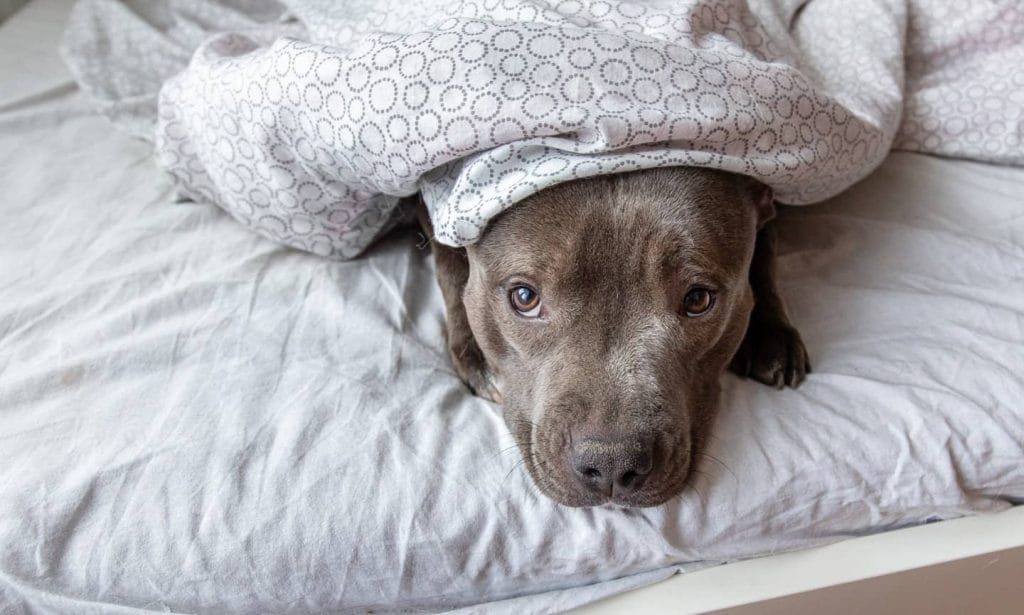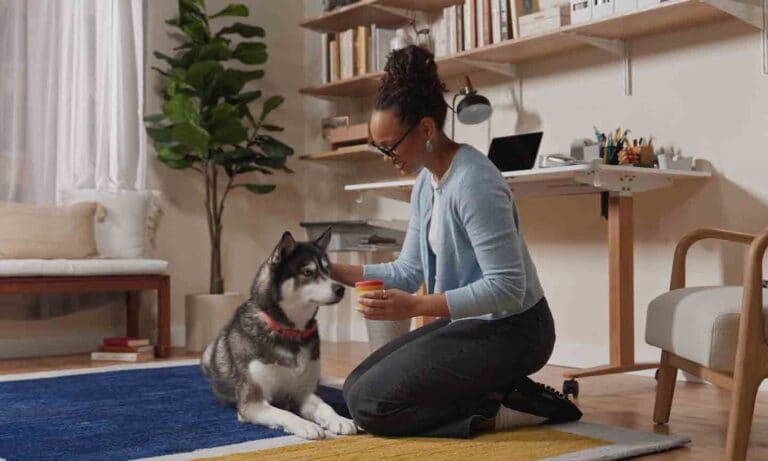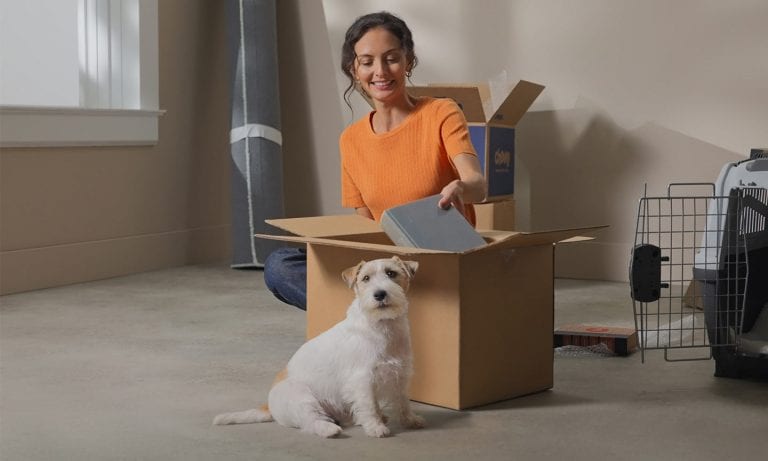Do you suspect your dog is stressed? Anxiety is extremely common in dogs, but the good news is there are plenty of ways to help your pup chill out.
The first step is understanding the signs of anxiety in dogs, and we’re here to help with this guide to five common dog anxiety symptoms
Word to the wise: If you notice your furry friend showing one (or more) of these signs, don’t automatically assume they have anxiety. Before you stock up on calming treats and a Thundershirt® make sure you call your vet. That’s because many of the signs of anxiety in dogs are seen with other health conditions, and different types of dog anxiety have similar symptoms.
Say a dog is panting and pacing. Yes, they could be anxious, but they could also be in pain or suffering from heart or lung problems. Similarly, a shivering dog could be anxious, or cold, or have a neuromuscular condition. A chat with your vet can confirm that your dog really is experiencing anxiety, and ensure that you use the right methods to treat it.
And if your vet does confirm your dog has anxiety, remember that your goal isn’t just to stop their problem behaviors, but to treat the underlying mental health disorder itself. That’s because long-term anxiety can have negative health effects for your pet, and even decrease their lifespan. So if you have an anxious dog, now is the time to take action.
Let’s look at some of the most common signs of anxiety in dogs in greater detail. Keep in mind that most dogs develop more than one of these common symptoms.
In This Guide:

1 Increased Vigilance
Does your dog keep their ears pricked and eyes constantly scanning their surroundings for potential danger? Do they watch you intently, and seldom leave your side?
Anxious dogs are worried that something bad is about to happen, so they rarely let their guard down, at least when triggers (loud noises, an approaching dog or impending separation from you, for example) are present. Some dogs suffer from generalized anxiety and feel like they need to be vigilant almost all the time.
Dogs who are constantly on the lookout for the next bad thing that is about to happen are under a lot of stress. In addition to extra vigilant or clingy behavior, you may notice:
- Pacing
- Fidgeting
- Licking themselves excessively
Repetitive behaviors like these can have a calming effect, just like you might get from twirling your hair or tapping your foot when you get nervous.
Unfortunately, the positive effect of these behaviors is mild and temporary, and not always without adverse consequences. For instance, excessive licking can lead to hair loss and injury to the skin.
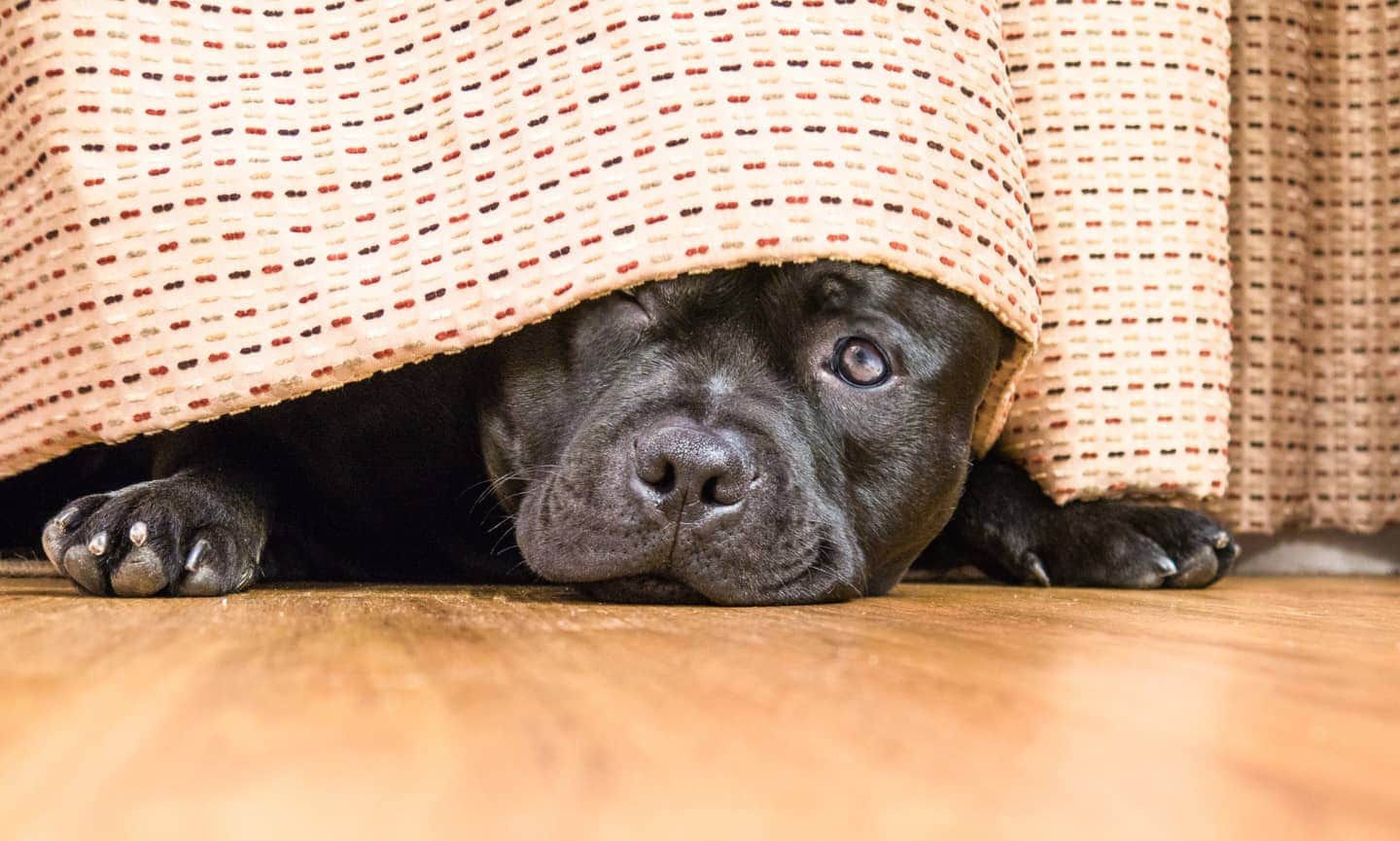
2 Avoidance
If they have the choice, most dogs with anxiety will try to avoid what they see as a potential danger rather than confront it head on.
Avoidance behaviors can be subtle. Your dog may look away from what is making them nervous or avoid making eye contact with you when they’re anxious. They may also prefer to be left alone and move away if you try to comfort them.
Watch your dog’s body language for these signs of anxiety:
- Ears held back against the head
- A tucked tail
- Crouching low
- Shrinking away from perceived threats
- A compact stance that minimizes the size of their body
- Wide eyes
- Dilated pupils
Anxious, avoidant dogs often seek out hiding places, too. If one is not available, they will sometimes freeze in place and resist your attempts to get them to move.
Remember to use caution with a dog who’s hiding or frozen in place. If an anxious dog feels trapped, they can become so scared that they feel the need to defend themselves and respond aggressively.
It's a good idea to keep a safe distance from your dog in these moments. Instead, try to eliminate or at least minimize the source of your dog's anxiety so that they eventually feel comfortable moving away on their own.
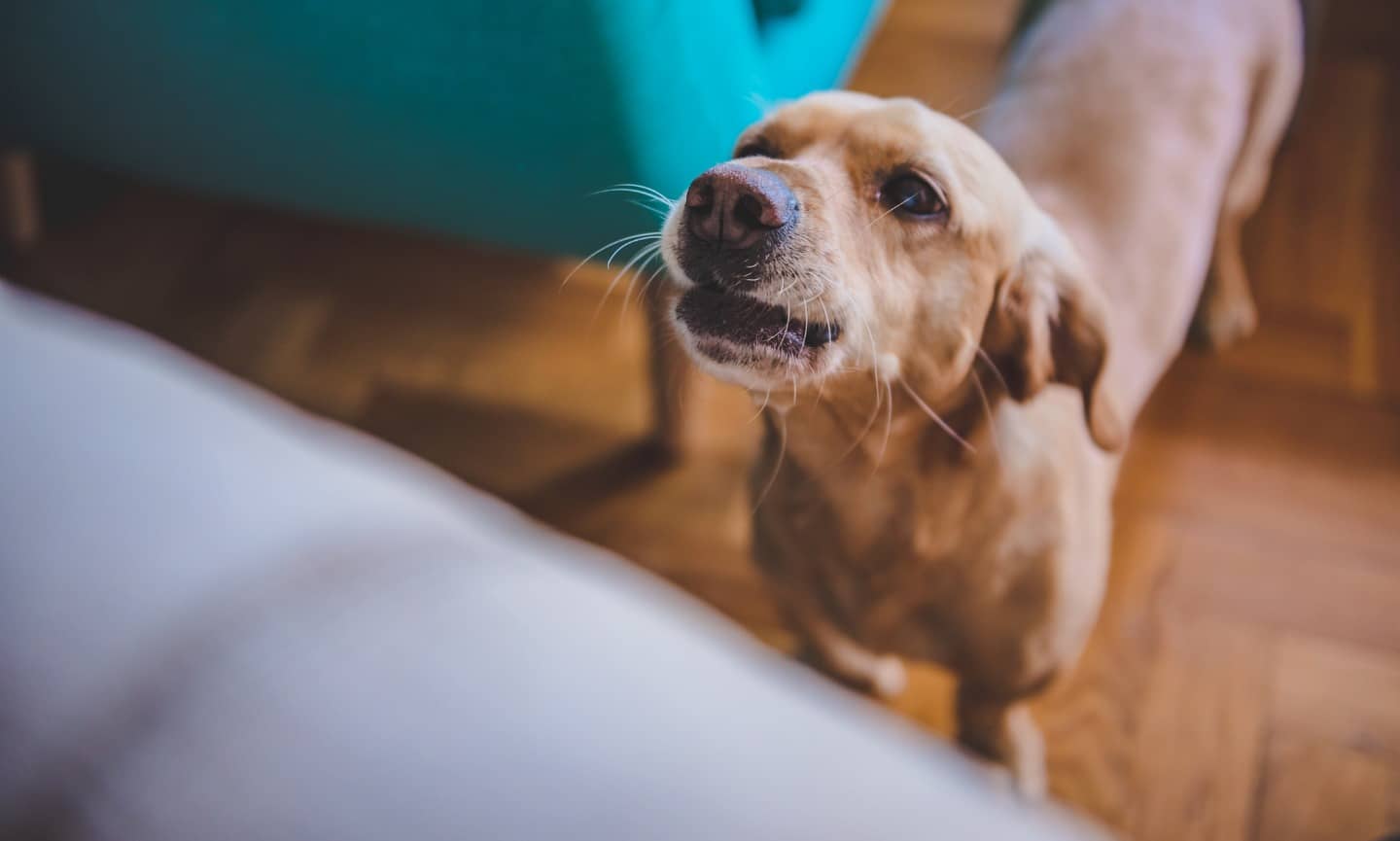
3 Vocalization
Dogs with anxiety can be, well, loud. Their anxious vocalizations typically fall into two categories:
- Whining or whimpering: Much like a child might cry when forced into a situation that makes them extremely nervous, anxious dogs whine or whimper to communicate their feelings.
- Barking: A dog barking excessively and frantically may also be suffering from anxiety. They could be trying to scare away a perceived threat, like a dog on the other side of the fence or the scary person with an umbrella approaching along the sidewalk. Dogs with separation anxiety, or anxious episodes triggered by their parents’ absence, often bark, sometimes incessantly, after you leave the house. You may be unaware of how noisy your dog is until you hear about it from a neighbor.
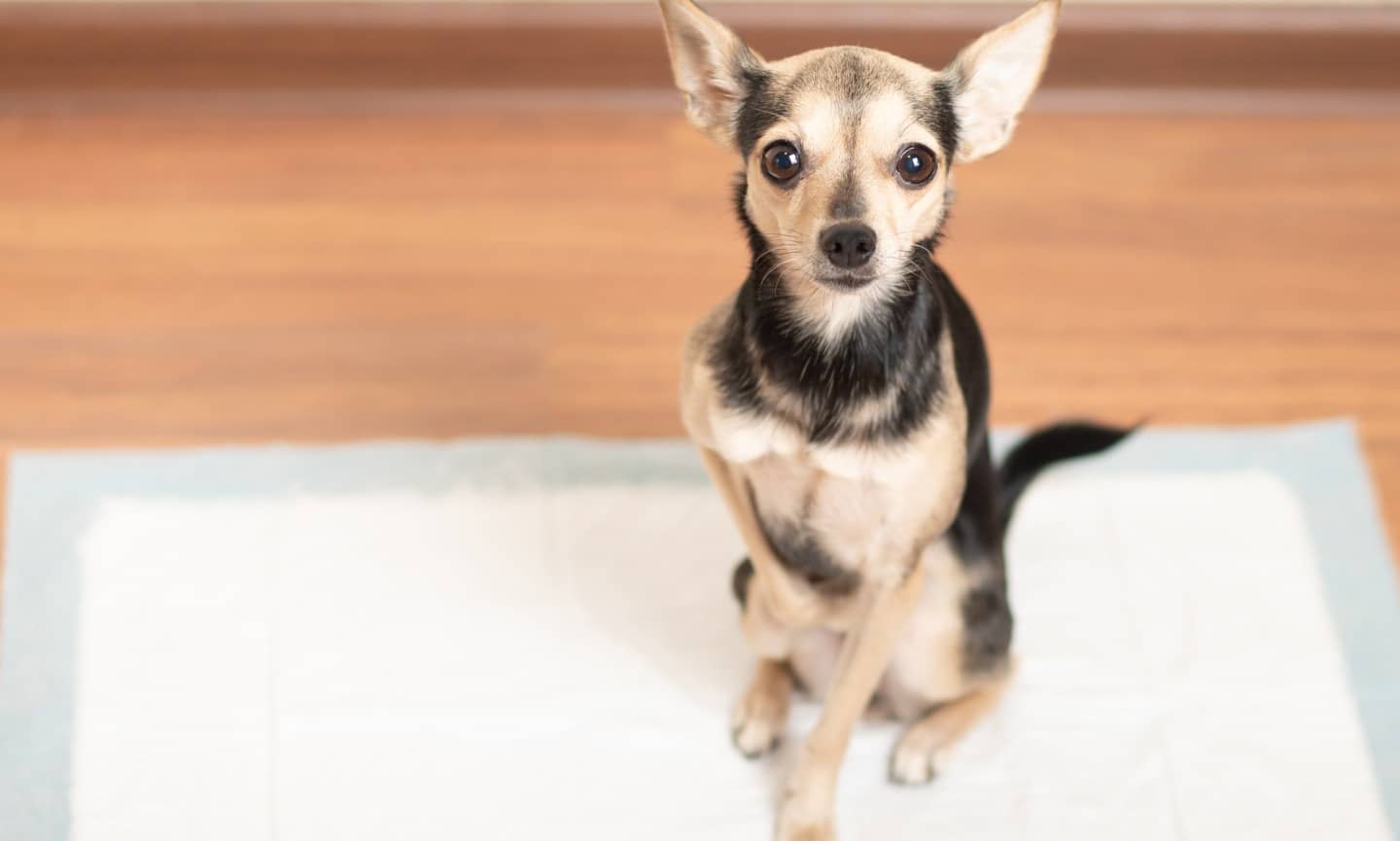
4 Potty Accidents
In the face of real danger, this instinct makes sense: It lightens the body, helping the dog run away faster, and it just might distract an opponent during a fight. But in response to a thunderstorm or a stranger at the door? Not ideal.
Regardless of the reason, though, it’s important to remember that when an anxious dog makes a mess, they are not being “bad.” They are terrified and not in control of their bladder and bowels—and they need your care and support, not an angry reaction that may increase their anxiety.
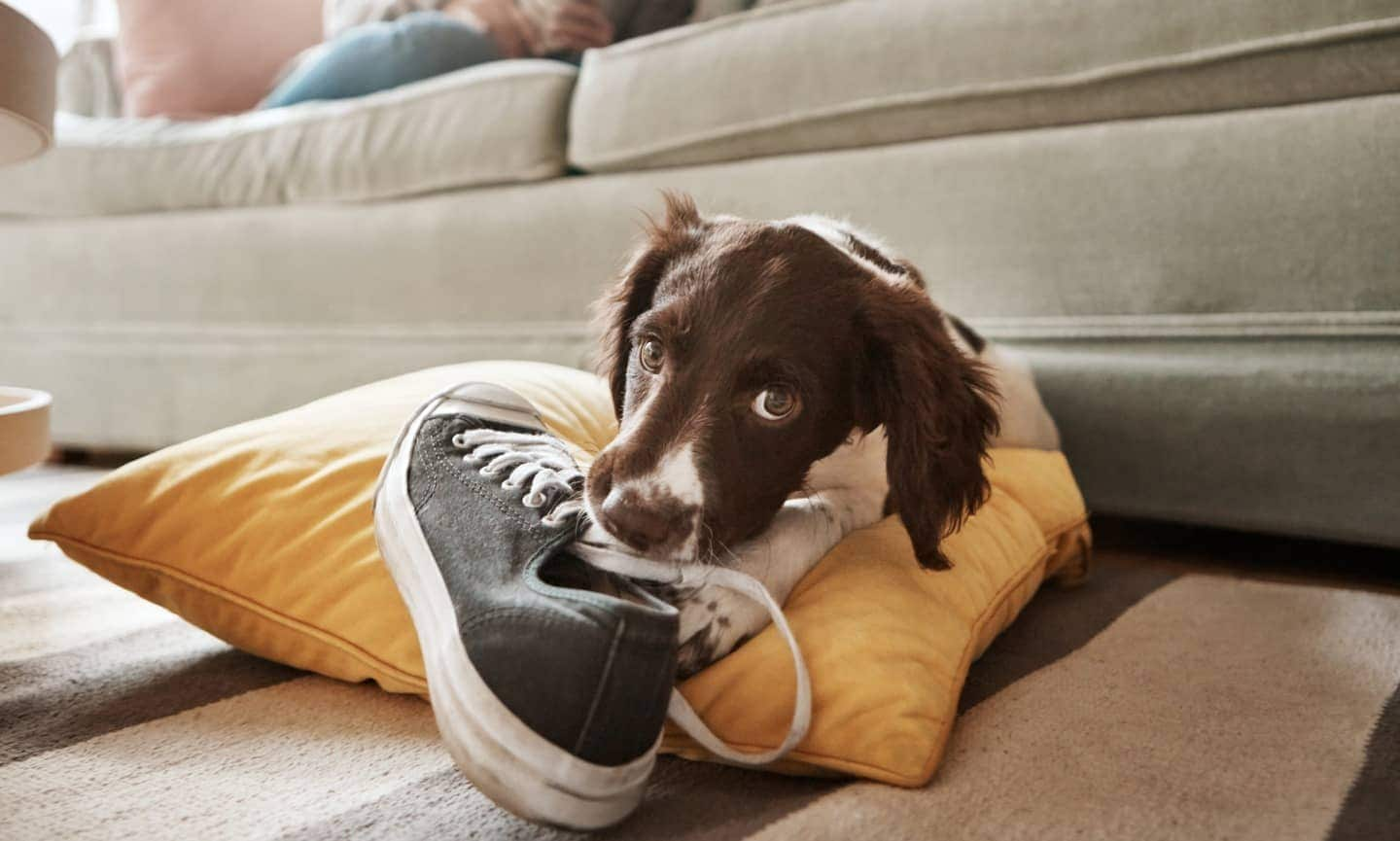
5 Destructive Behaviors
When a dog’s anxiety turns into panic, they can become destructive.
Scared dogs will do anything within their power to escape if they feel trapped, which can lead to clawed wallboards, chewed trim and doors, broken windows and screens, and sometimes serious injuries. These escape behaviors can all be signs of dog separation anxiety as they attempt to be reunited with their owners when left alone.
You may be tempted to crate your furry friend, both for their own protection as well as for your furniture. But doing so without first addressing their anxiety is not recommended. Dogs who aren’t properly crate trained may feel trapped inside their crates, which could actually increase their anxiety.
Chewing at the crate is a common escape behavior, which can injure their mouths and break teeth. They may tear up their bedding or toys, creating choking hazards. They may even claw so desperately at the cage that they break off toenails—and any bits that are swallowed can lead to gastrointestinal damage and/or blockage.
Other Dog Anxiety Symptoms
Those five are not the only signs of anxiety in dogs. Other common dog anxiety symptoms include:
- Trembling
- Panting
- Drooling
- Lip licking
- Sniffing the air
- Shaking as if they were wet
- Yawning
Anxiety can also affect a dog’s appetite—they often eat less, but some anxious dogs eat more. Activity levels may also change, with some dogs being overly stimulated and hyper and others retreating into themselves and becoming listless.
How To Help a Dog with Anxiety
Anxious dogs are truly suffering, so if you suspect your pet is stressed, it’s important to seek help immediately. The benefits of early treatment can’t be overstated, because anxiety symptoms tend to get worse over time, and dogs may become fearful under an increasing number of circumstances. For these reasons, knowing how to calm dogs with anxiety is extremely important.
The first step is to avoid situations that cause your dog to become anxious. You don’t want them to suffer more than they already are, and each time their anxiety is triggered, it reinforces their behavioral response. In layman's terms, it’s a chance for them to “practice” those stress-driven behaviors you’re trying to reduce.
So, for example, if your dog has separation anxiety, figure out a way to avoid leaving them alone while they begin treatment. Be sure to give your dog lots of attention, praise and treats when they are calm, too.
Next, make an appointment with your veterinarian. They can determine whether your dog truly does suffer from anxiety and if so, what type is involved. Your vet will then discuss treatment options, which may include:
- Anxiety-relieving medications
- Calming nutritional supplements
- Anti-anxiety wraps or vests
- Behavioral modification techniques like counter conditioning, or slow, gradual exposure to their triggers (such as picking up your keys around a dog with separation anxiety)
So, does your dog have anxiety? If they’re showing the above signs of anxiety in dogs, it’s possible—but talk to your veterinarian as soon as possible to get a definitive answer.
Next, check out our Ultimate Guide to Calming Your Stressed Pet.
This content was medically reviewed by a veterinarian.
More about dog anxiety:
Share:
